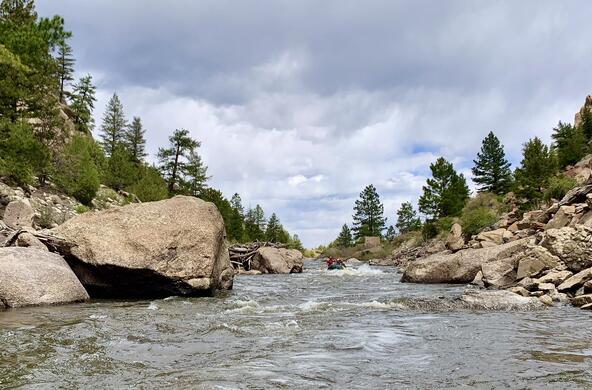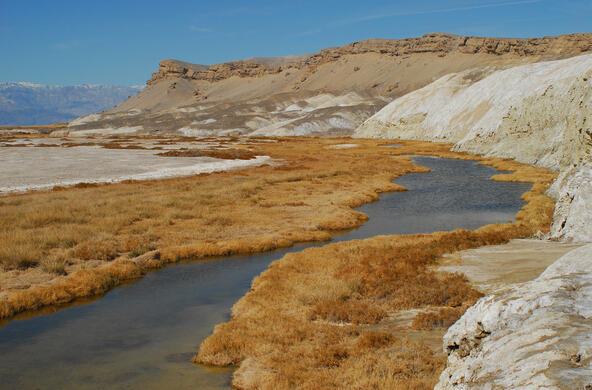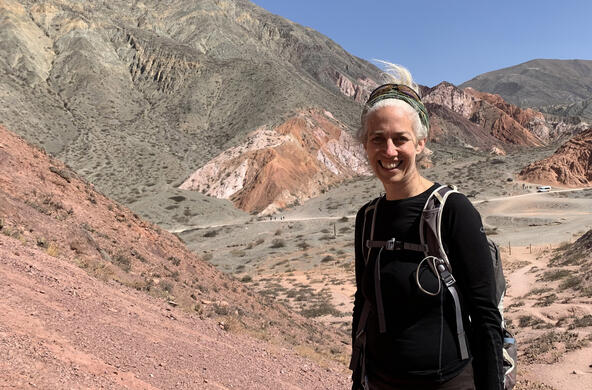We identify the seasons through changes in biological and physical phenomena such as flowering, breeding or animal migration that mark an expected break in the pace of nature.
Doesn't it feel like spring has finally sprung when the crocuses, tulips and daffodils poke through the soil? Fall is definitely in the air when the leaves change and the highways of the Hudson Valley are crowded with leaf peepers. The migrations of raptors and geese each year signify that the weather is starting to become too cold for the birds. The study of these phenomena is called phenology ("phen" means "phenomenon" and "ology" means "study of").
Phenological data have been used in many ways to estimate changes in regional climate. For example, a 300-year record of the date when cherry and apple trees have flowered in Switzerland has been used to reconstruct the average temperatures from February through April preceding flowering. Another example is a 600-year record of the start of the French grape harvest that has been used to create historical records of spring and summer temperatures in Europe.
One phenological measurement noted all over the world is the ice-out date, the day in the year when a lake's ice coverage first breaks up. People have recorded ice-out dates for hundreds of years to know when to remove their ice-fishing huts from the lake, when it is not safe to walk, skate or ski or snowmobile on lakes, when seasonal flooding will start, or even the earliest time to put boats safely in the water.
Now, with a global focus on climate change, phenological records such as ice-out dates can provide us with a long-term record of climate, even if that wasn't the intended purpose of the data collection. Ice-out is a more effective measure of climate change than short-term weather patterns, because it takes more than one warm day or one big snowstorm to affect the ice cover on a lake. To melt the ice on an entire lake, there must be a consistent pattern of warm weather, more rain and less snow during the long months of winter and early spring.
Many lakes and rivers across the world have well-established ice-out records, including Lake Suwa, Japan (since 1443) and the Red River, Canada (since 1799). Lake Mohonk in Ulster County has an ice-out record dating to 1933, thanks to observers at the Mohonk Mountain House and Mohonk Preserve.
Lake Sunapee in southern New Hampshire has a detailed ice-out history dating to the mid-19th century, thanks to local homeowners, lake associations, and scientists. For lakes in the northeastern United States, most ice-out dates occur from late March to late April, but vary depending on conditions.
Global climate change patterns become more obvious when we examine these long-term records. During the past 40 years, global climate began to change dramatically, and global average temperature began to increase rapidly. In this same time period, the ice-out dates for lakes have advanced rapidly so they are now on average two to three weeks earlier than 100 years ago.
In another century, if the current rate of change holds, Lake Mohonk could have only two months of thin ice cover each year, down from more than four months of cover in 1940, most likely the result of a later freeze and an earlier thaw. Ice-out dates are nature's thermometer of changes in regional climate.
What does this mean for us? For one, the world around us is changing. In the northeastern United States, we will see earlier springs and shorter and milder winters. Fewer and fewer lakes will be safely covered by ice all winter.
Early ice-out can also have profound implications for each lake ecosystem. According to a 2005 scientific report on climate change in the Northeast U.S., published by the organization Clean Air — Cool Planet and the University of New Hampshire, ice cover can play a role in controlling lake chemistry such as oxygen concentration and pH and lake biology such as fish habitat and algal blooms.
So next time you see a phenomenon that indicates the changing of the seasons — such as the blooming of apple tree blossoms, the changing of the leaves to spectacular fall colors or the melting of your favorite ice skating pond — make a note for the future. Understanding climate change could depend on it.
David C. Richardson is a biology professor at SUNY New Paltz and an adjunct scientist at the Cary Institute of Ecosystem Studies in Millbrook. Joshua J. Dorsi is a senior majoring in psychobiology at SUNY New Paltz.







